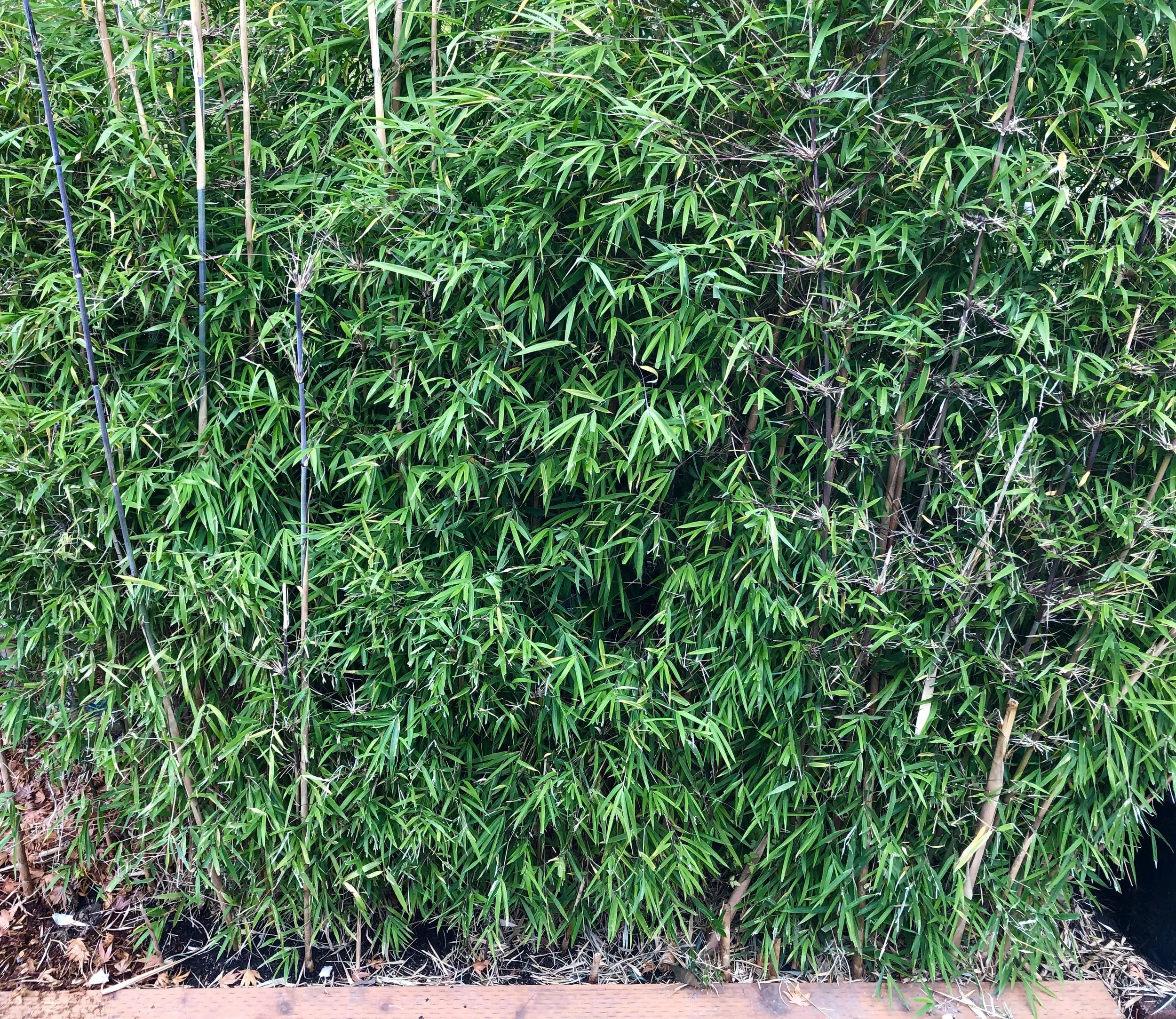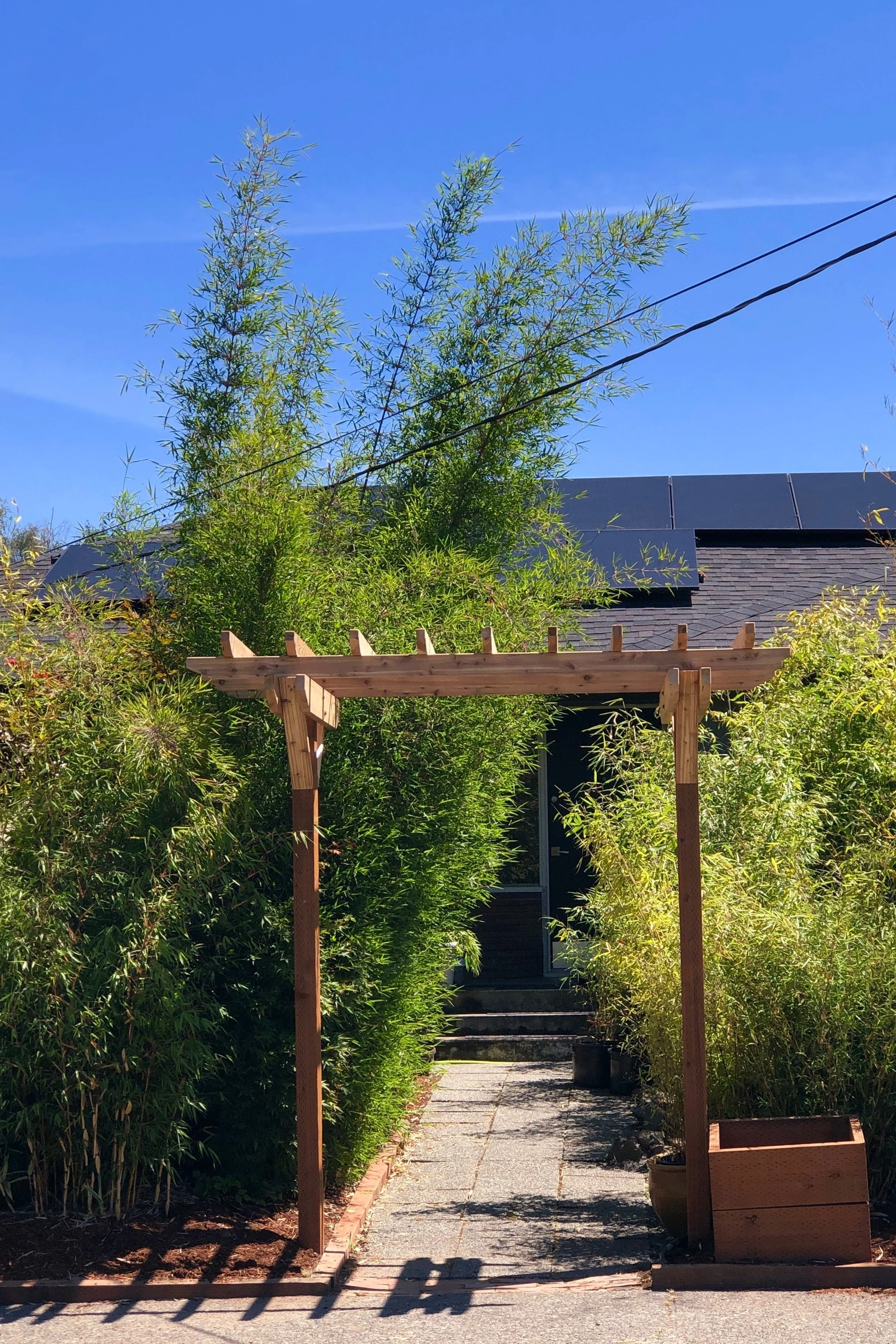
Borinda boliana
3 initial plants were used here to create this 15’ wall of dense bamboo privacy screen. This has been hedged with a trimmer so it won’t intrude on the walkway path.
Height: Realistic height in the Seattle/Puget Sound region is 16-20’, possibly higher if given enough room to grow.
Culms (Canes): Dark green with a waxy coating present a bluish appearance and 1-1.5” in diameter. Canes have a conical, fox tail branch structure that arch outwards as they mature. Dense cane growth produces a tight, compacted hedge providing a solid wall of privacy.
Leaves: Soft, narrow lance shaped leaves enshroud an intricate branch structure.
Habitat: Also known as Himilayan Blue Mountain bamboo, native to the high-altitude mountain forest regions of Tibet and surrounding regions. Like all bamboo, it grows best in an upper 15-20” layer of loamy, composted, well draining soil. It can handle a fair amount of Seattle summer sun and heat, but prefers a few hours afternoon shade.
Hardiness: Remains evergreen privacy throughout winter and can withstand 0° F temps. The leaves are prone to a slight curl in cold windy locations, making it less ideal as a wind screen. Fairly drought tolerant once established.
Growth Rate: Borinda bamboo is relatively fast-growing once it settles in gaining 4-6’ each year to full height. New canes emerge late Spring and the end of summer, the latter set not leafing out over winter until the following Spring.
Like all clumping bamboos, the roots expand outward and become the new shoots which define the perimeter of the plant. Compared with others, Borinda clumping bamboos command a larger planting area as they size up. 6-8’ of planting width is a good minimum to produce 15’+ canes.
Landscaping and Uses: A very underrated clumping bamboo, boliana creates a dense wall of privacy that can be trimmed or hedged to suit paths and walkways. Suitable for larger containers at least 4’L x 2”W. Canes are strong solid wood perfect as garden canes or wands.
Maintenence: Older and thinner canes can be pruned out to highlight newer, larger canes. A hedge trimmer can be used to square the top and sides. Clumping bamboos expand in predictable fashion, but can still envelope a neighboring fence or crawl under patio tiles over time.
Caution: While clumping bamboo is not as invasive as running bamboo species, it's still important to monitor its growth and prevent it from spreading beyond its intended area by using barriers or containment methods. Understanding the growth habit and pairing the right variety is imperative before you plant bamboo, let us help you through the process!
Borinda boliana pictured left in 85° Seattle summer sun, kept pruned off the walkway. A few hours of dappled shade is preferable, but it can handle Puget Sound heat.


